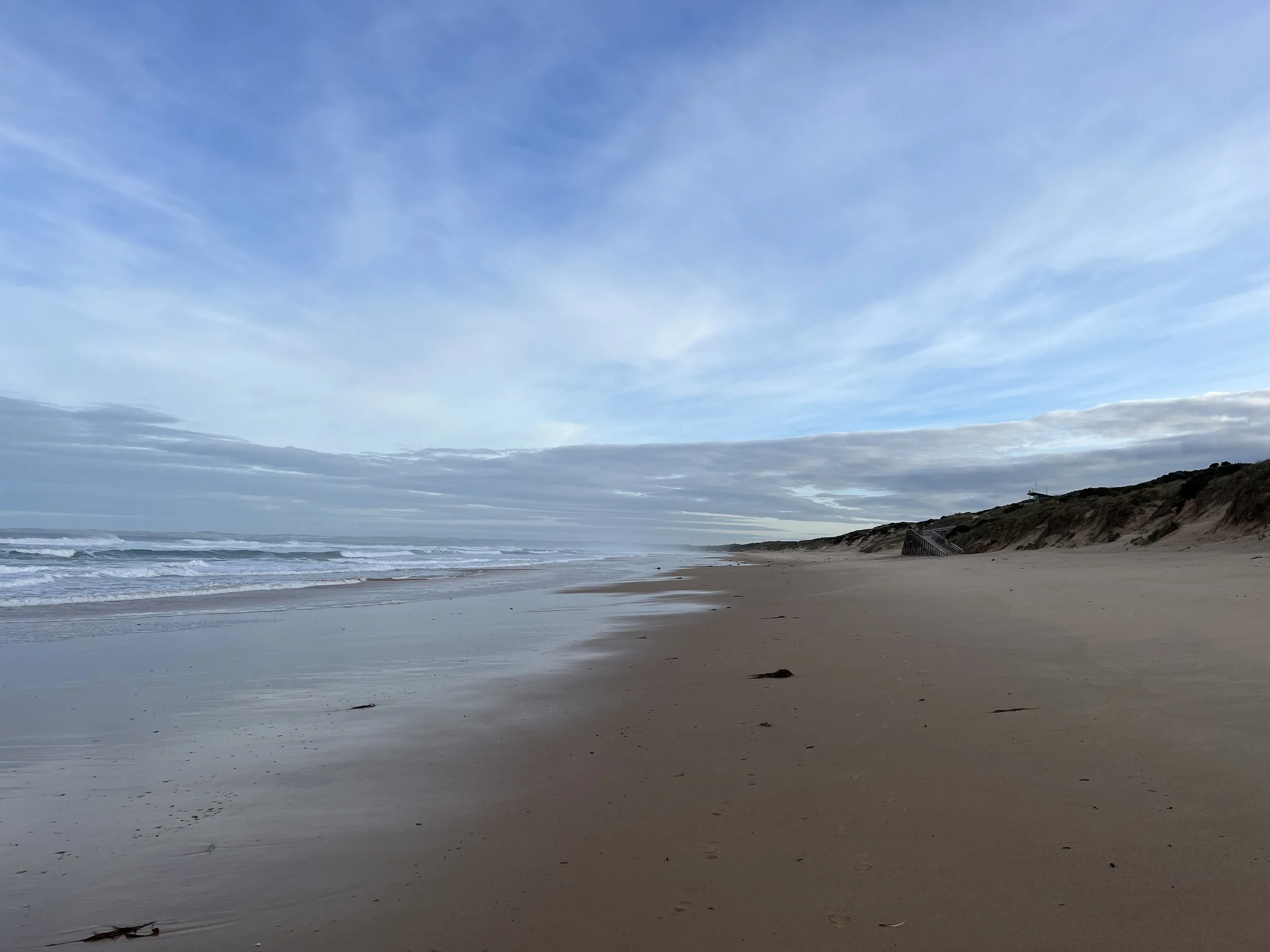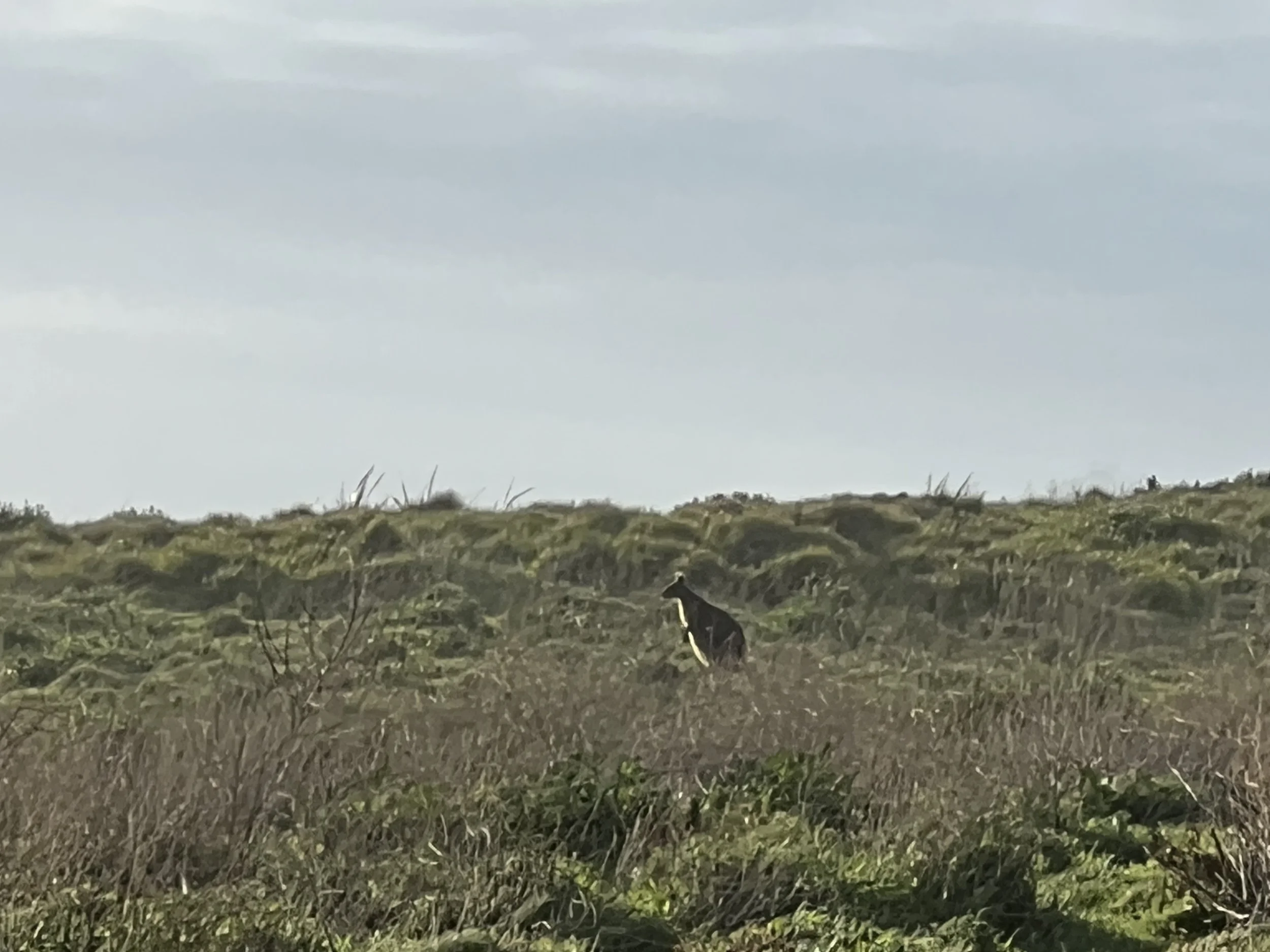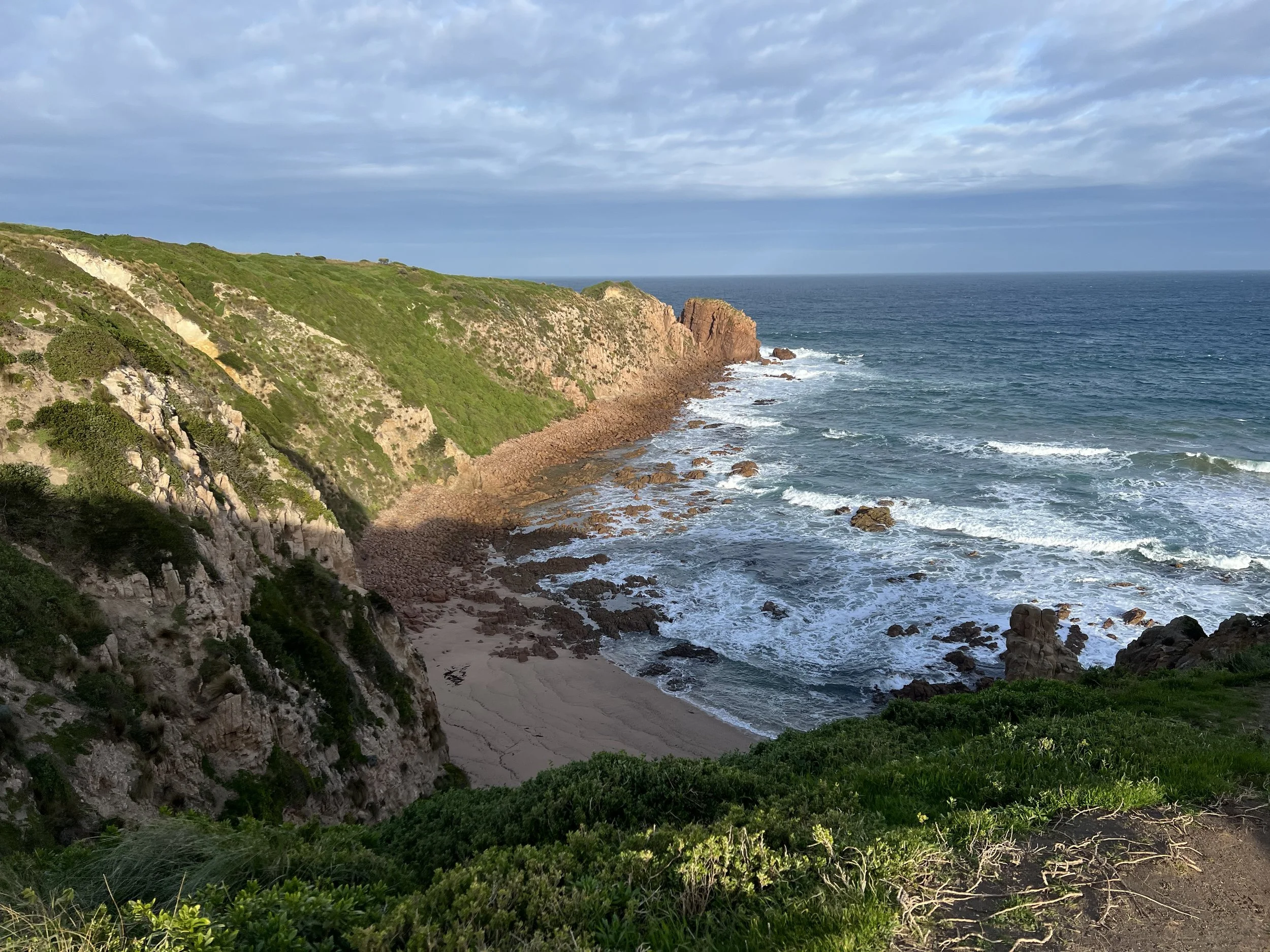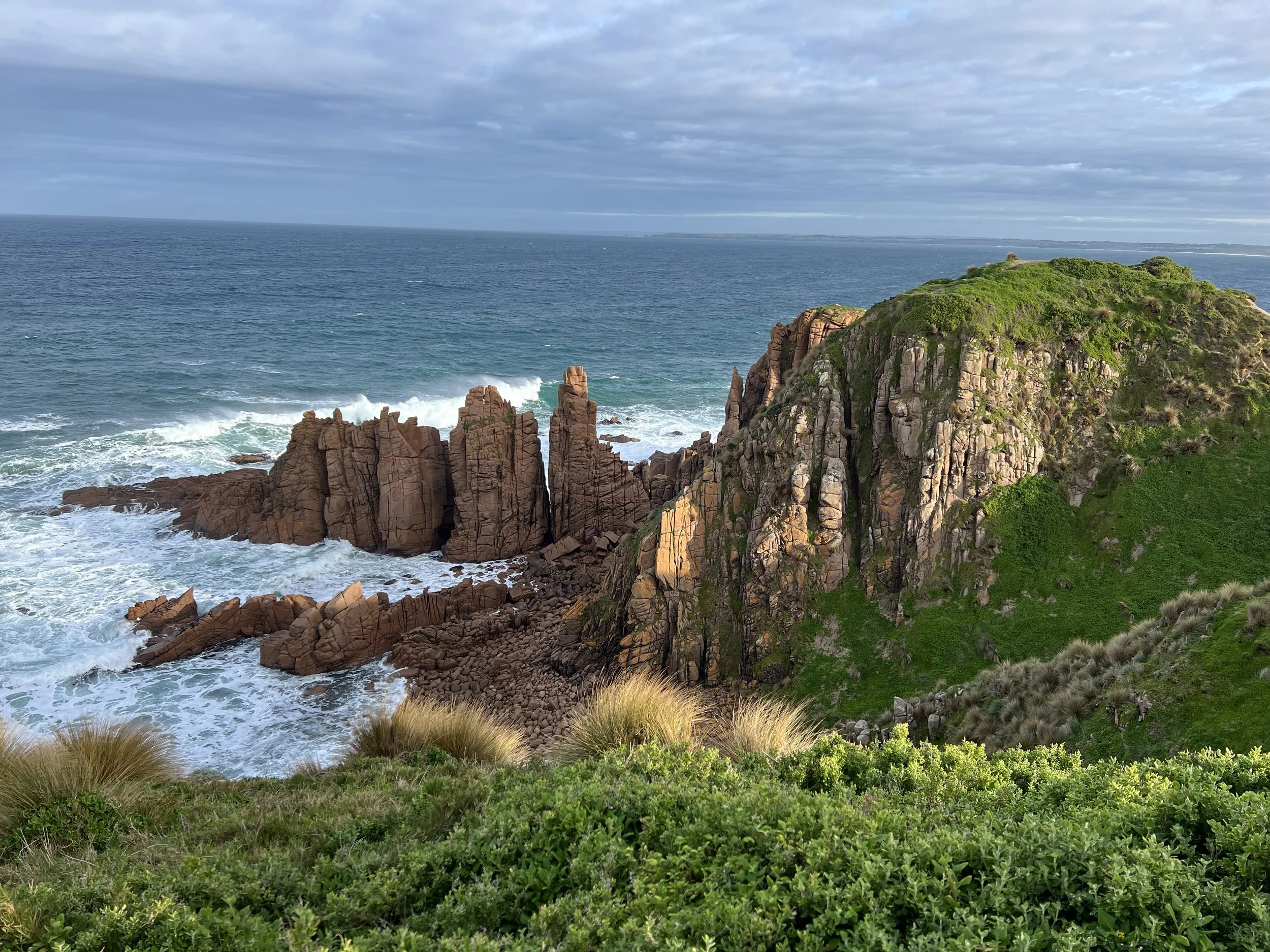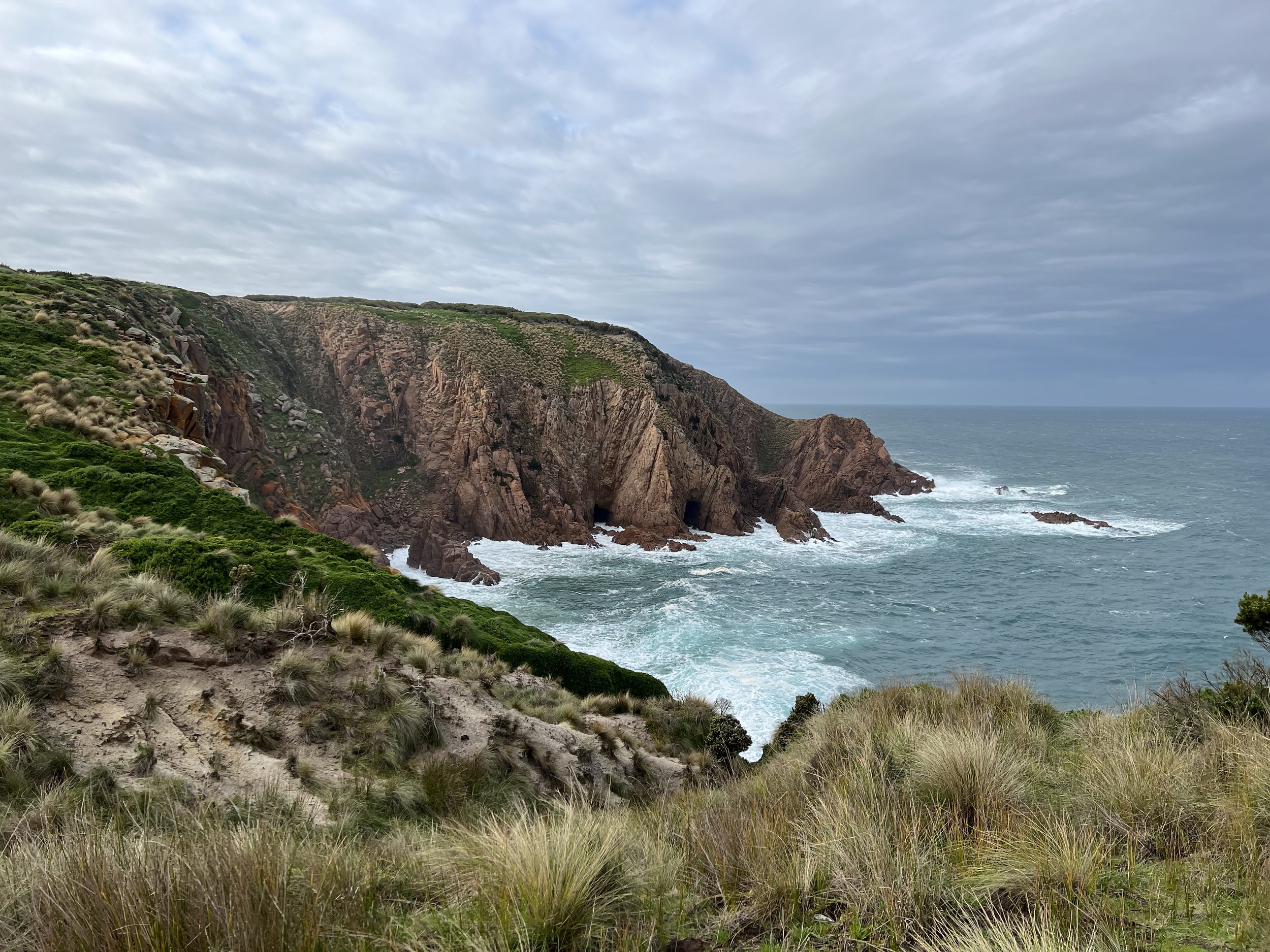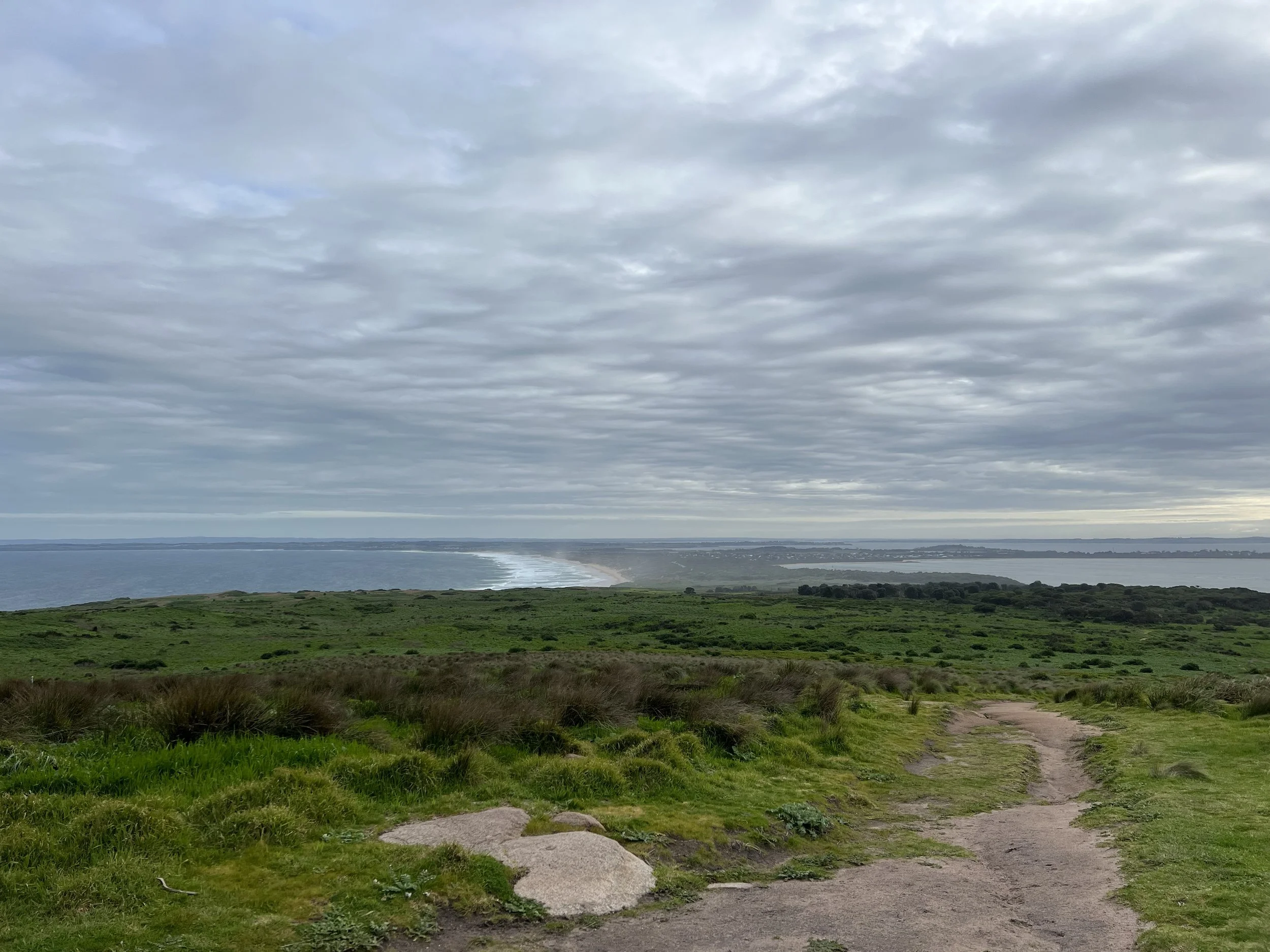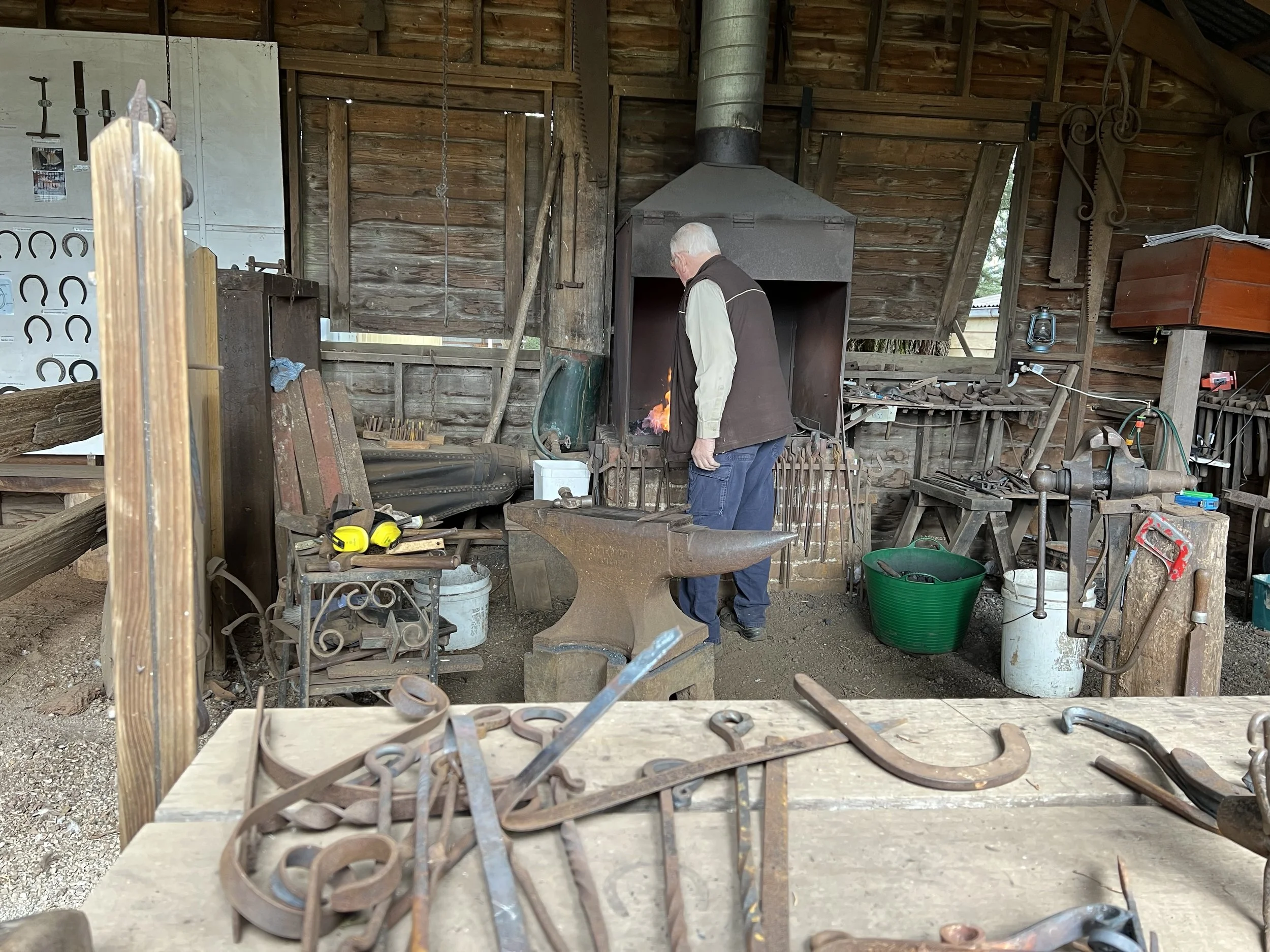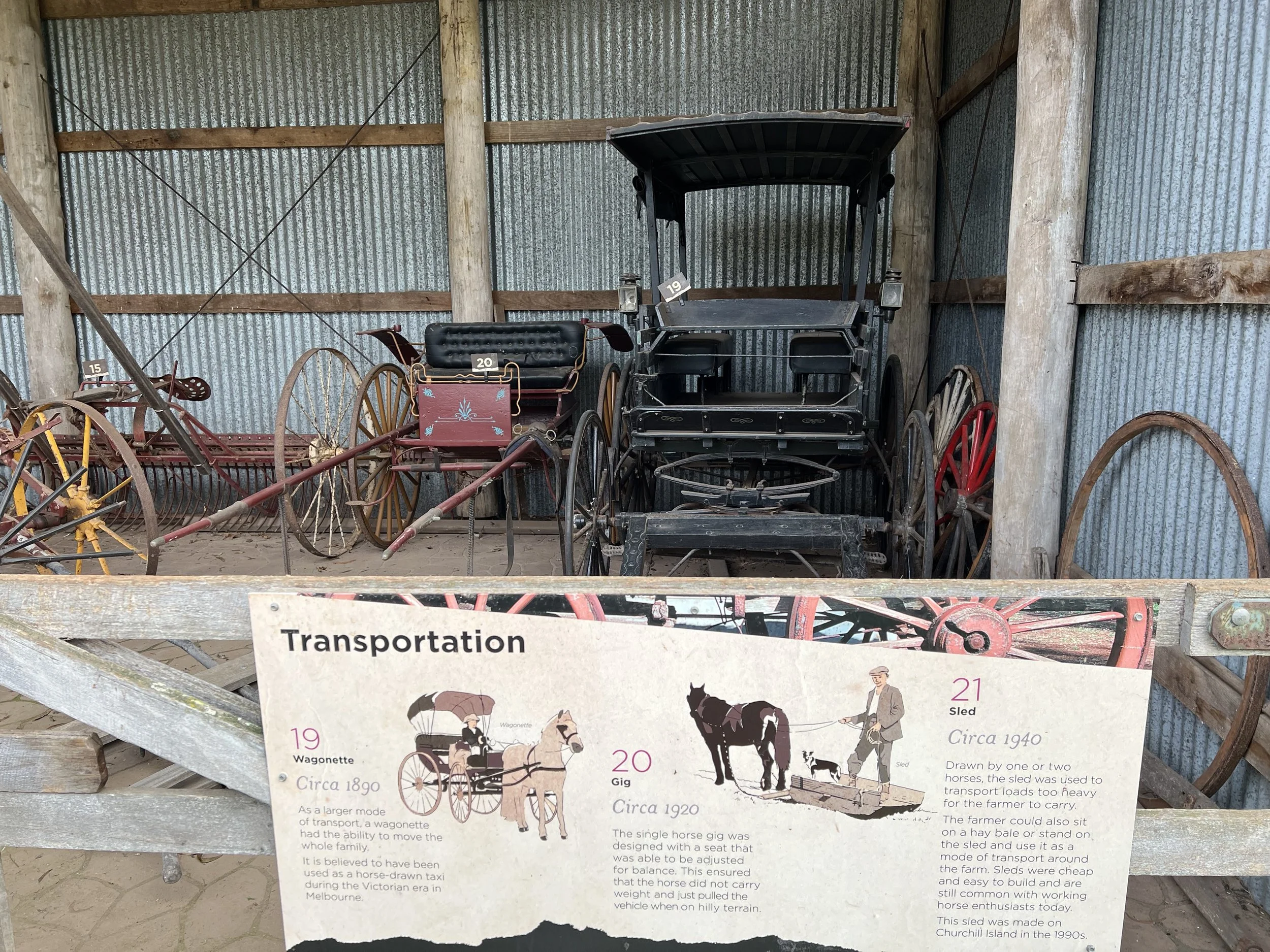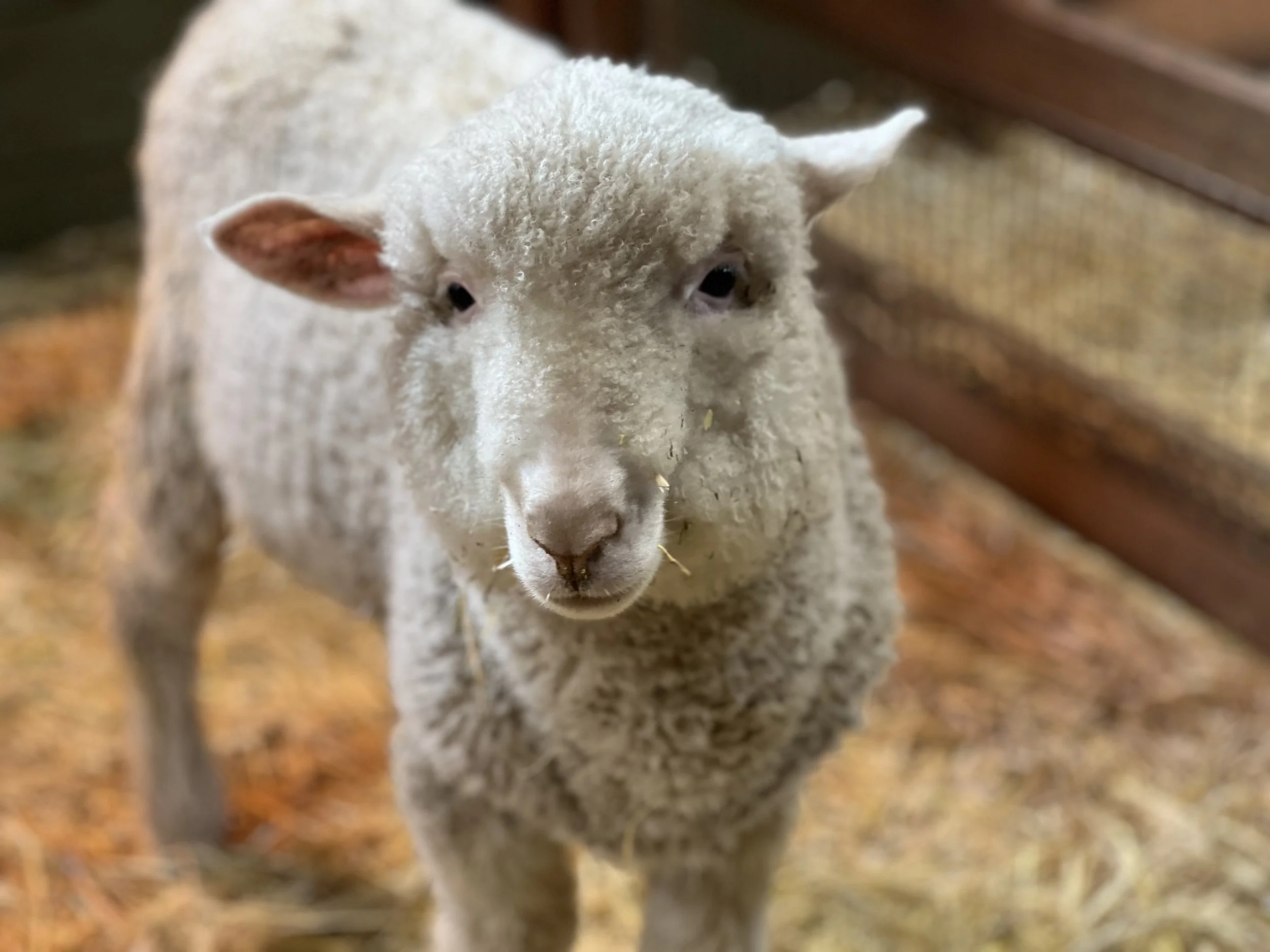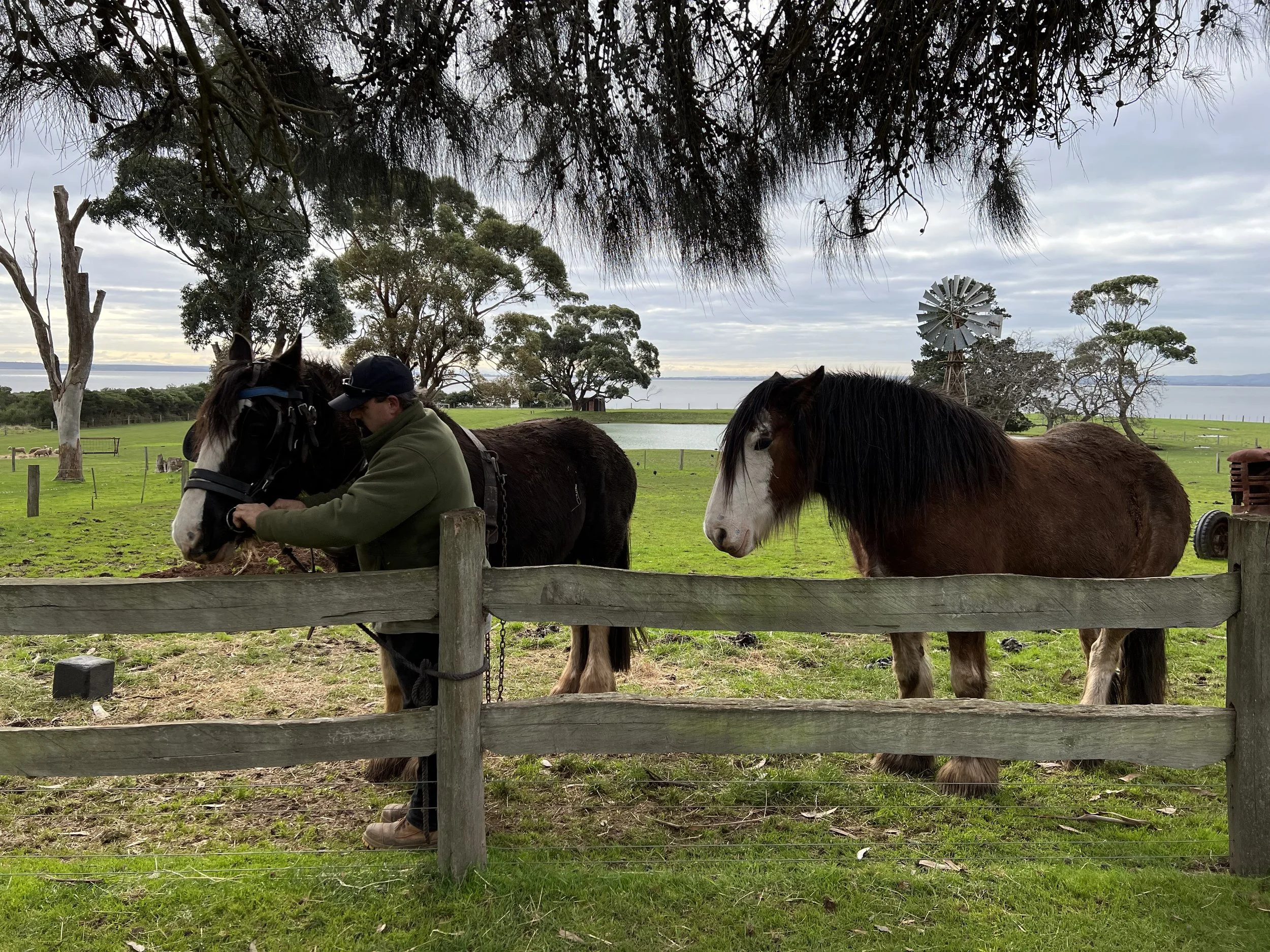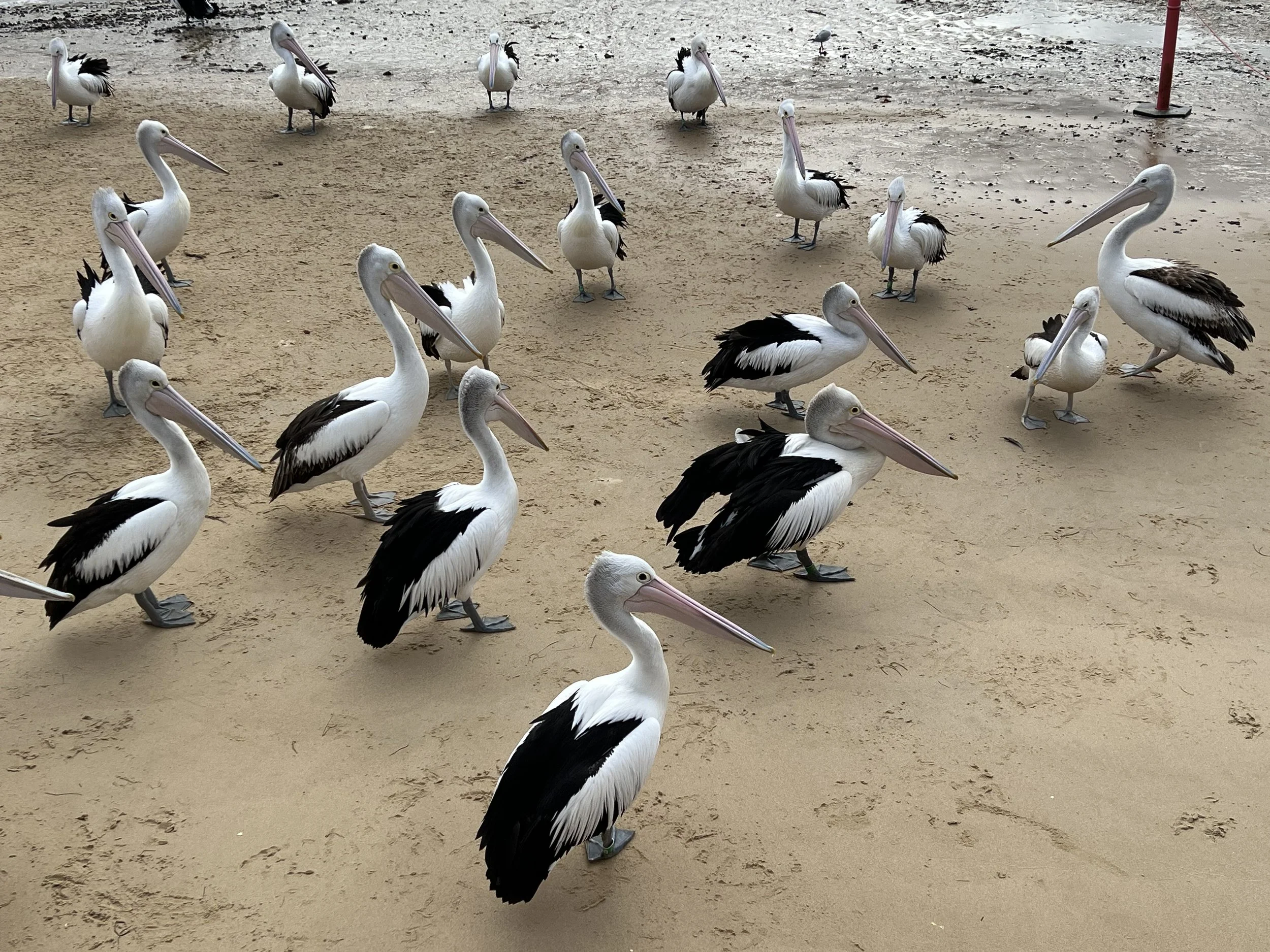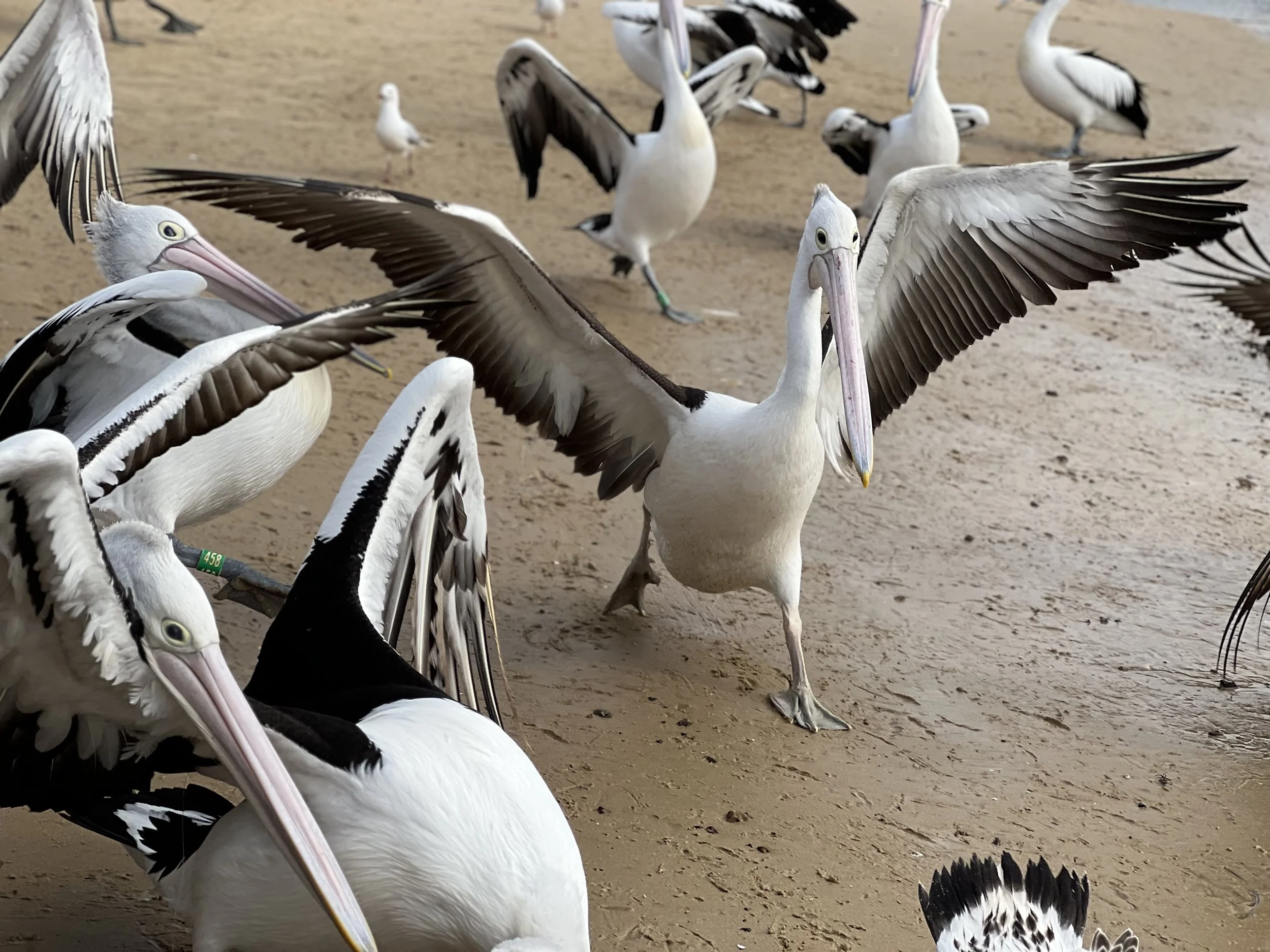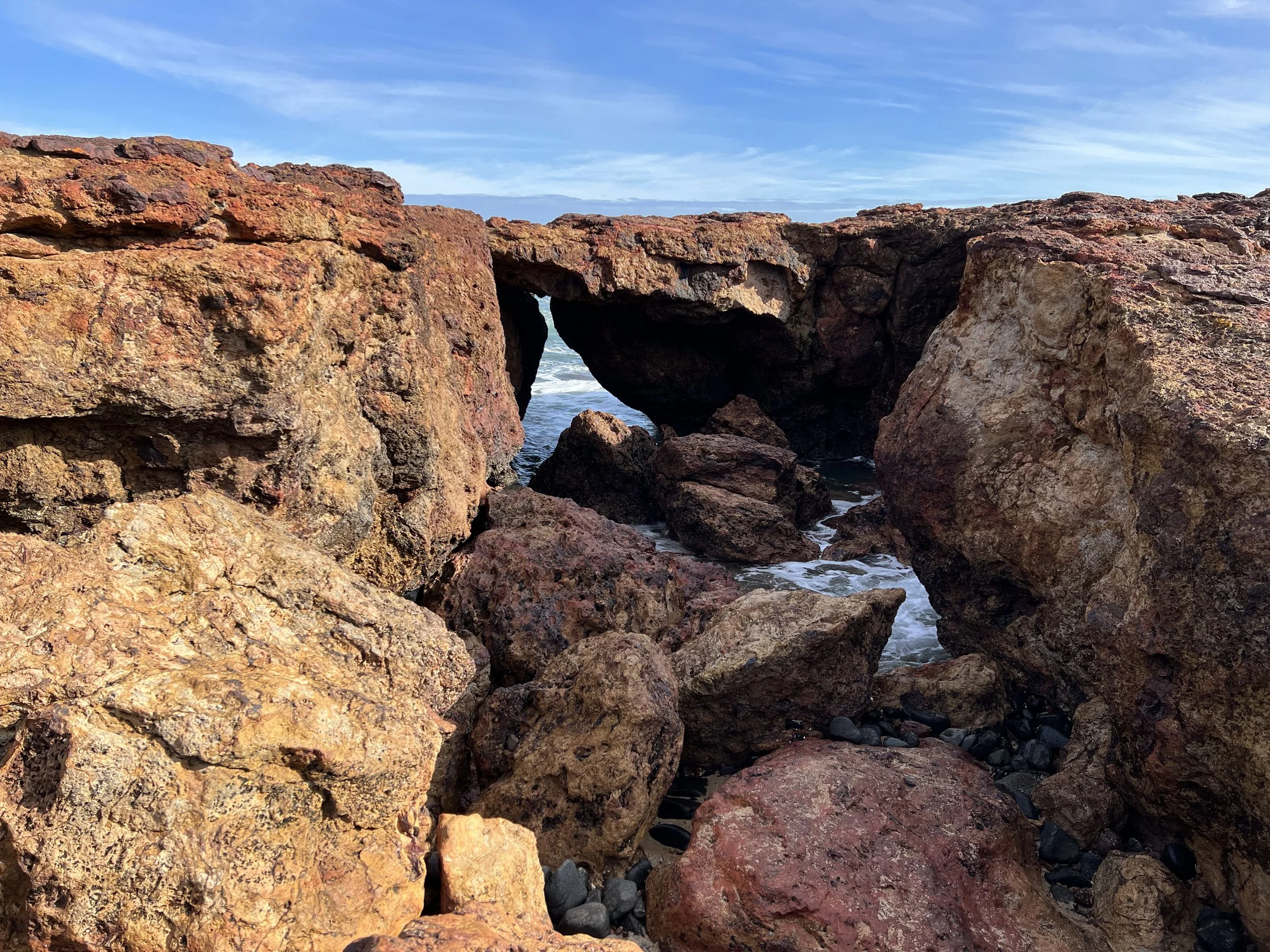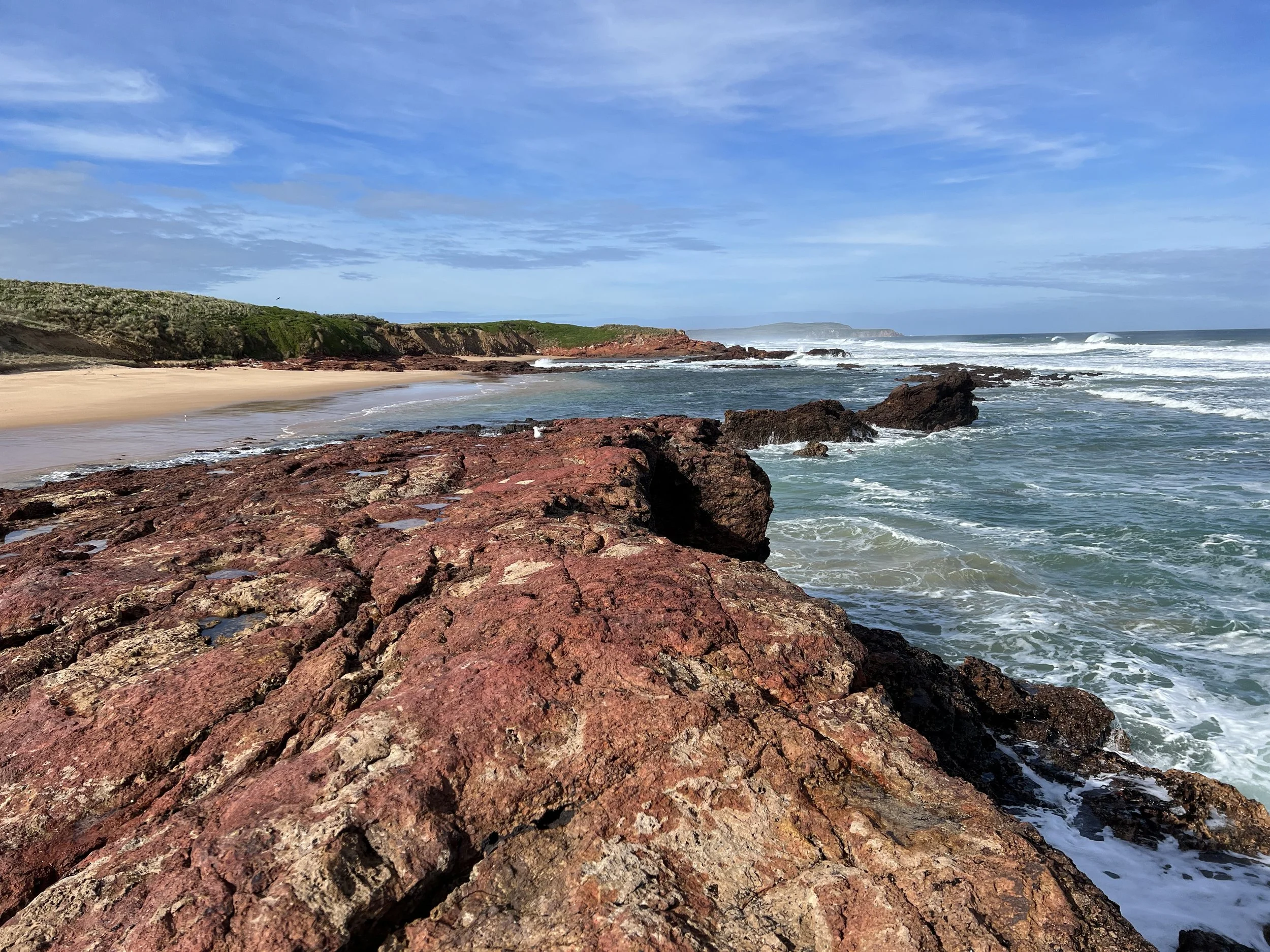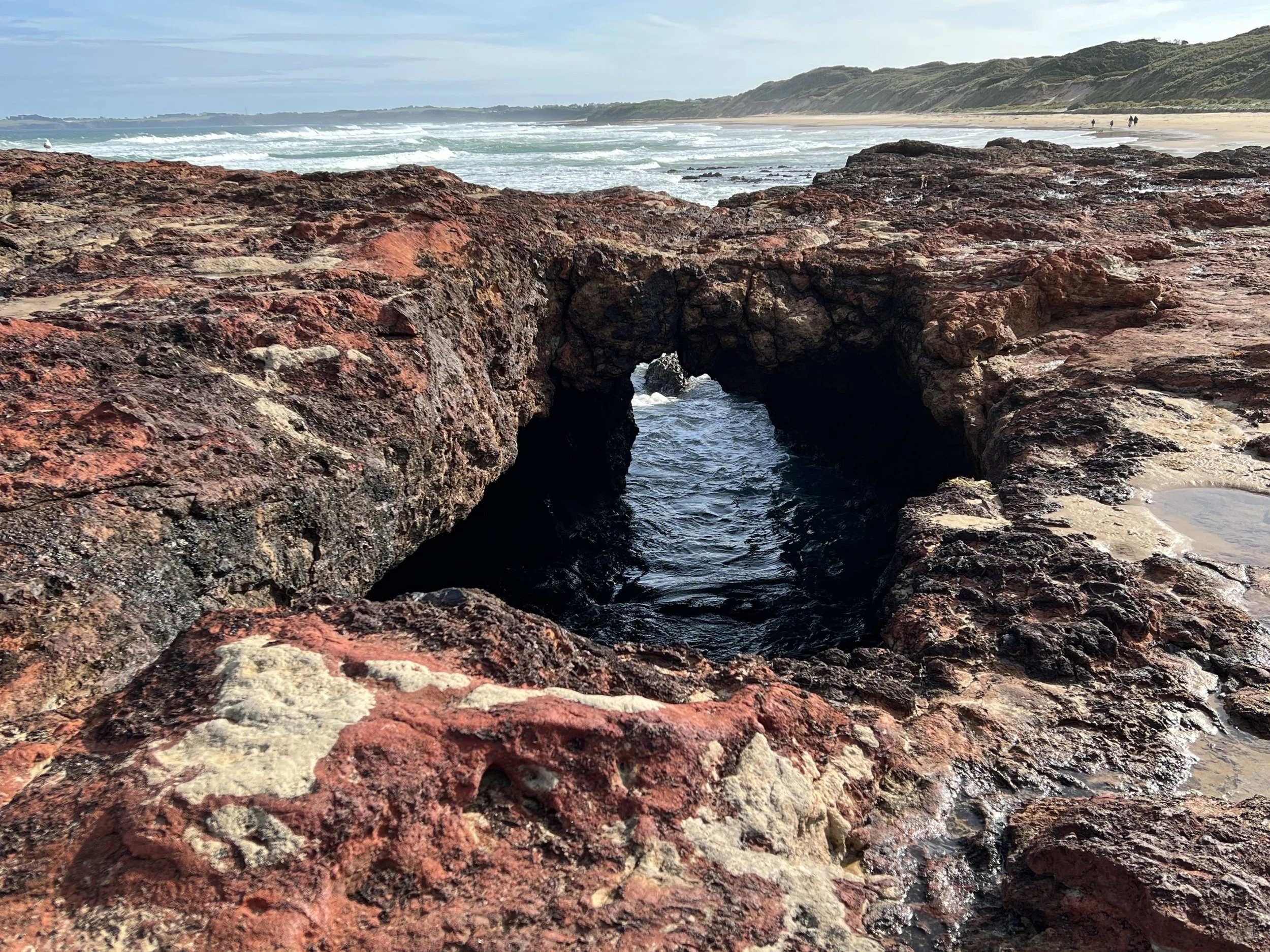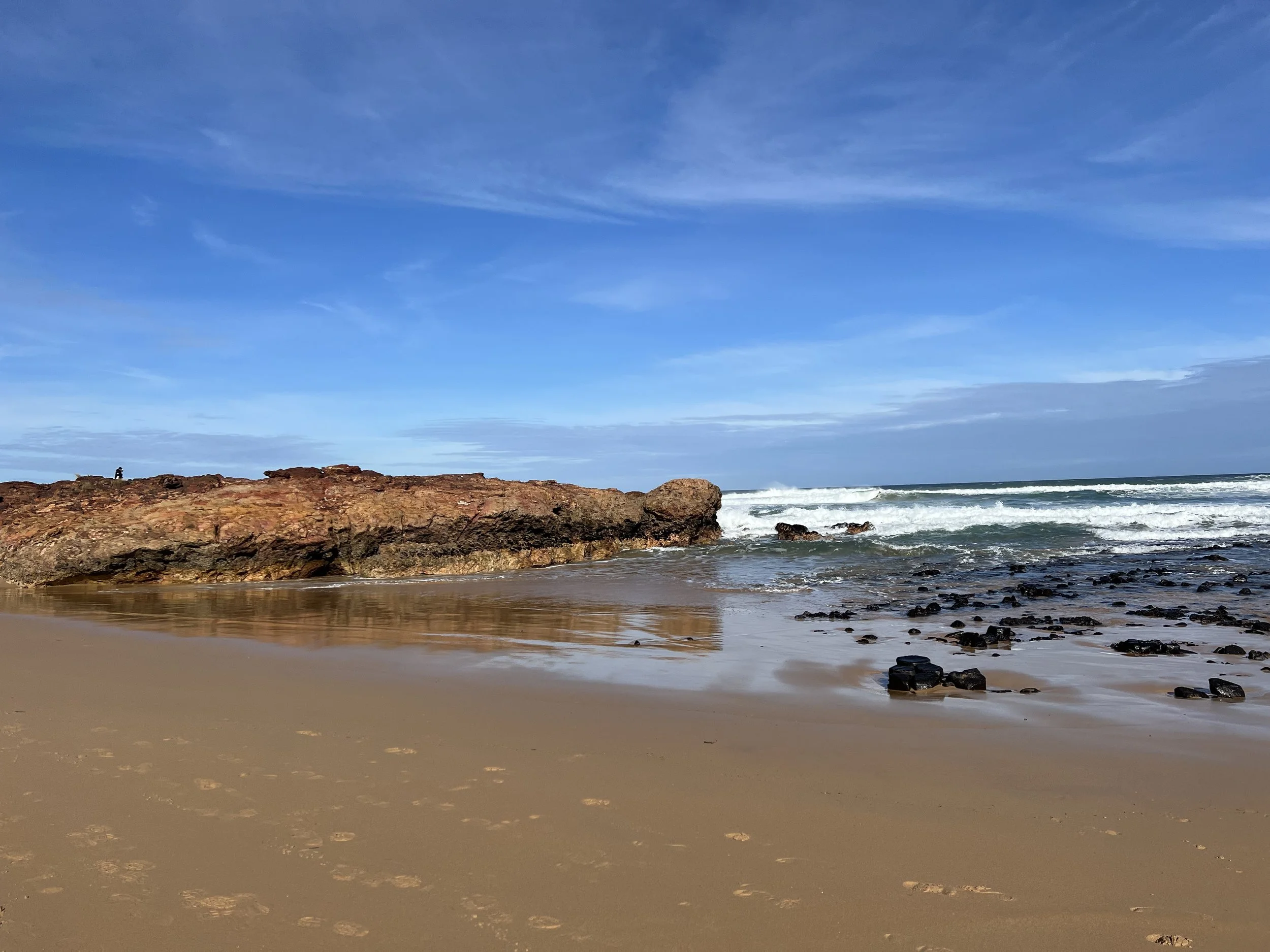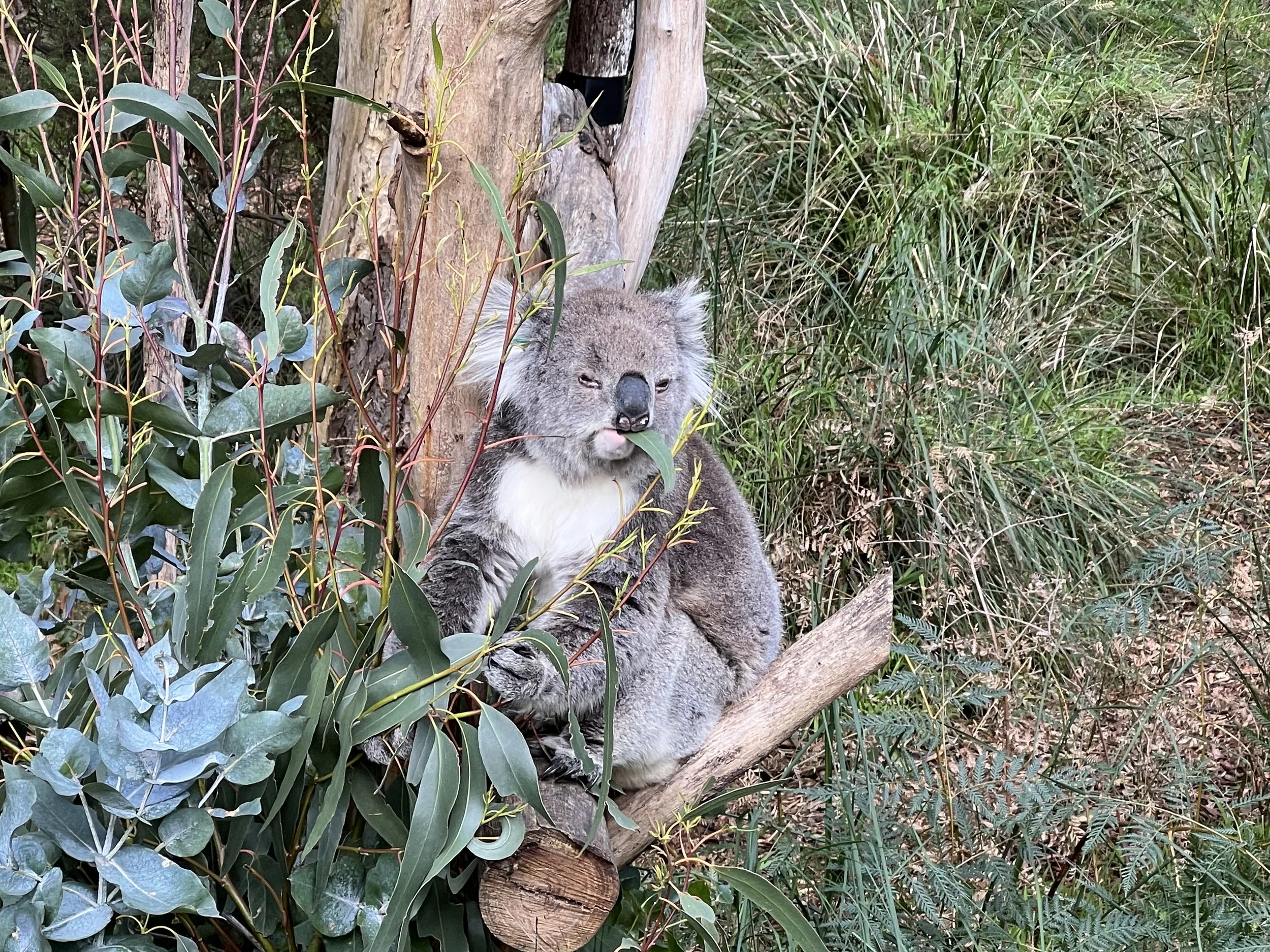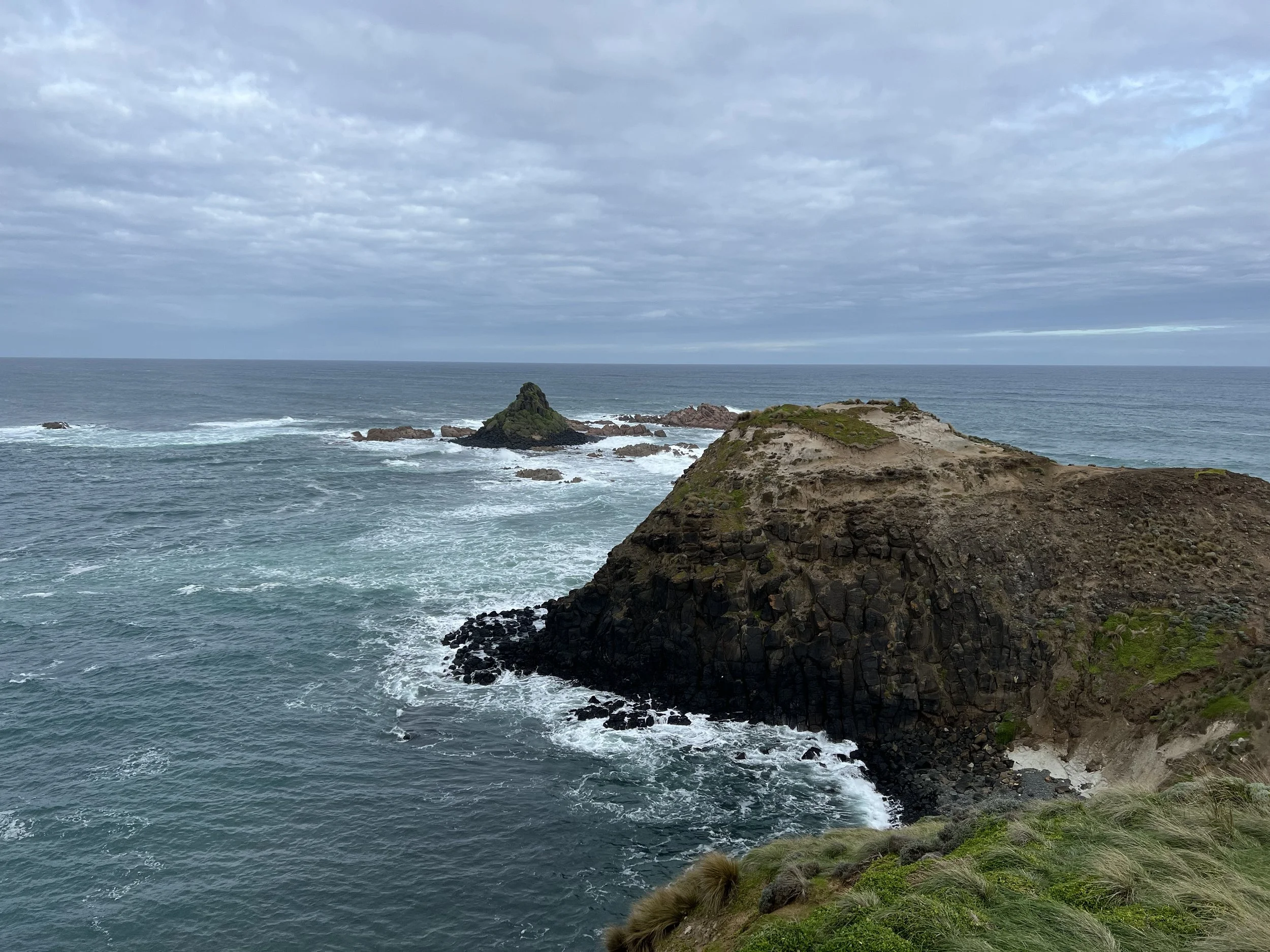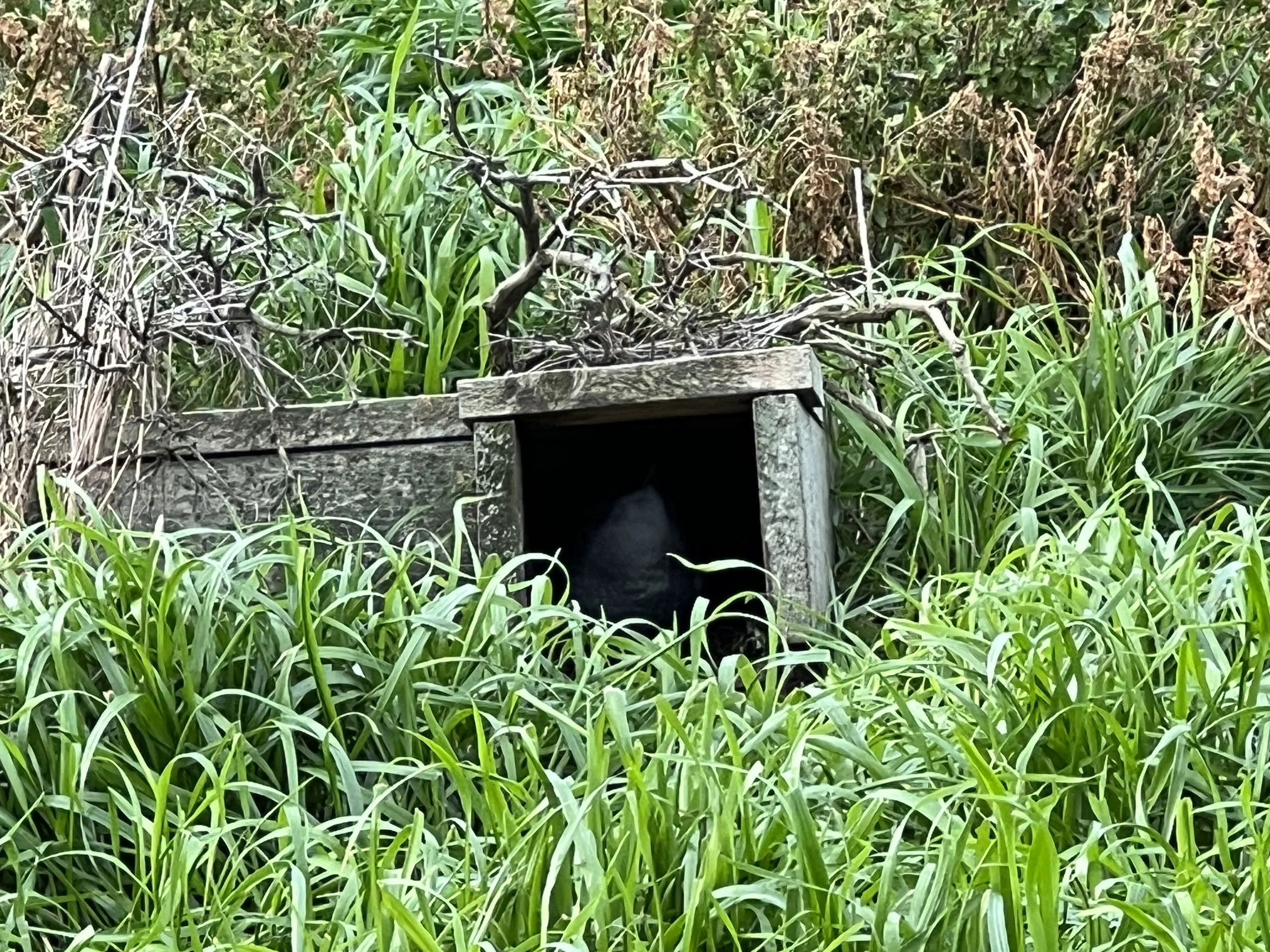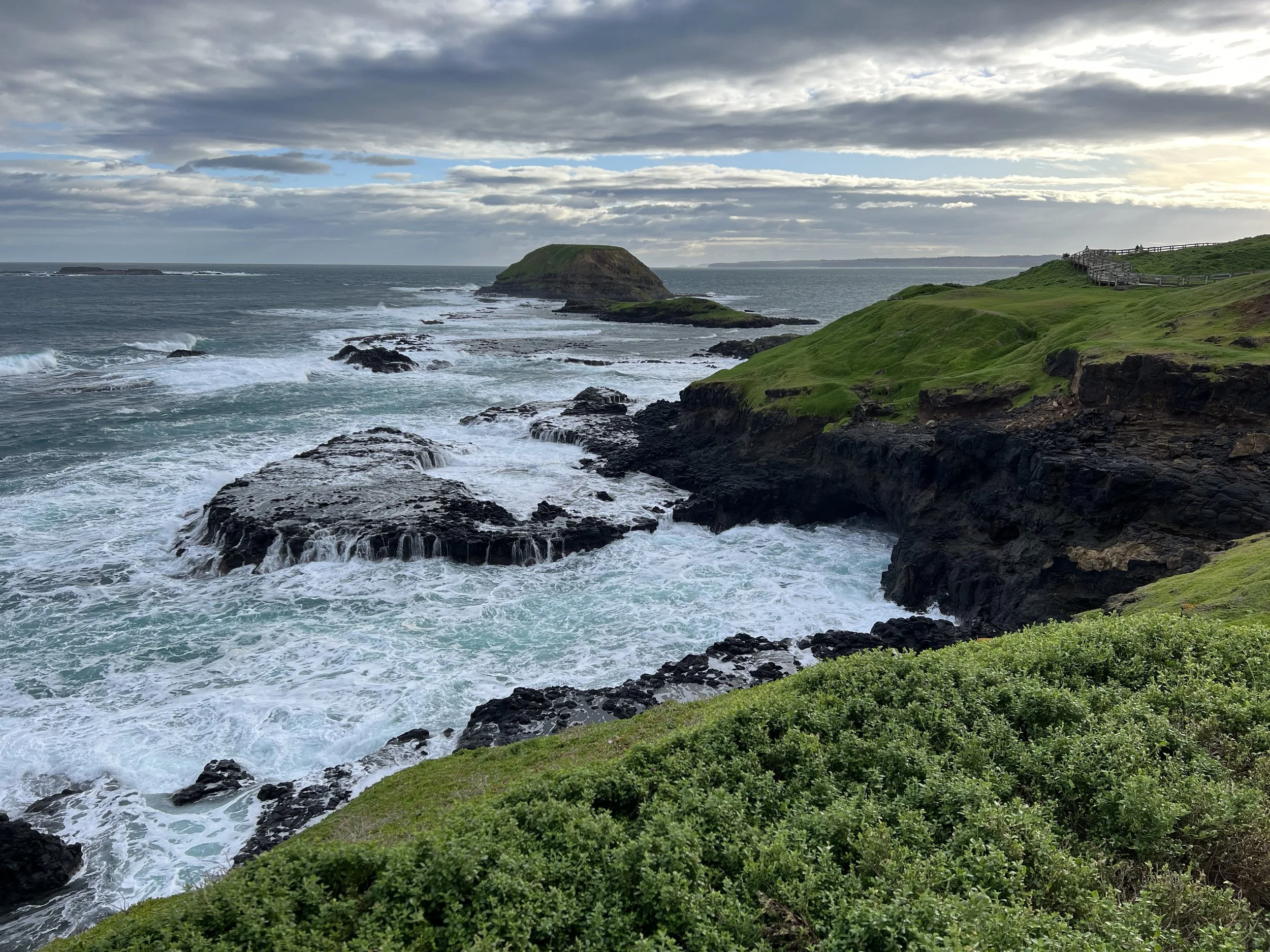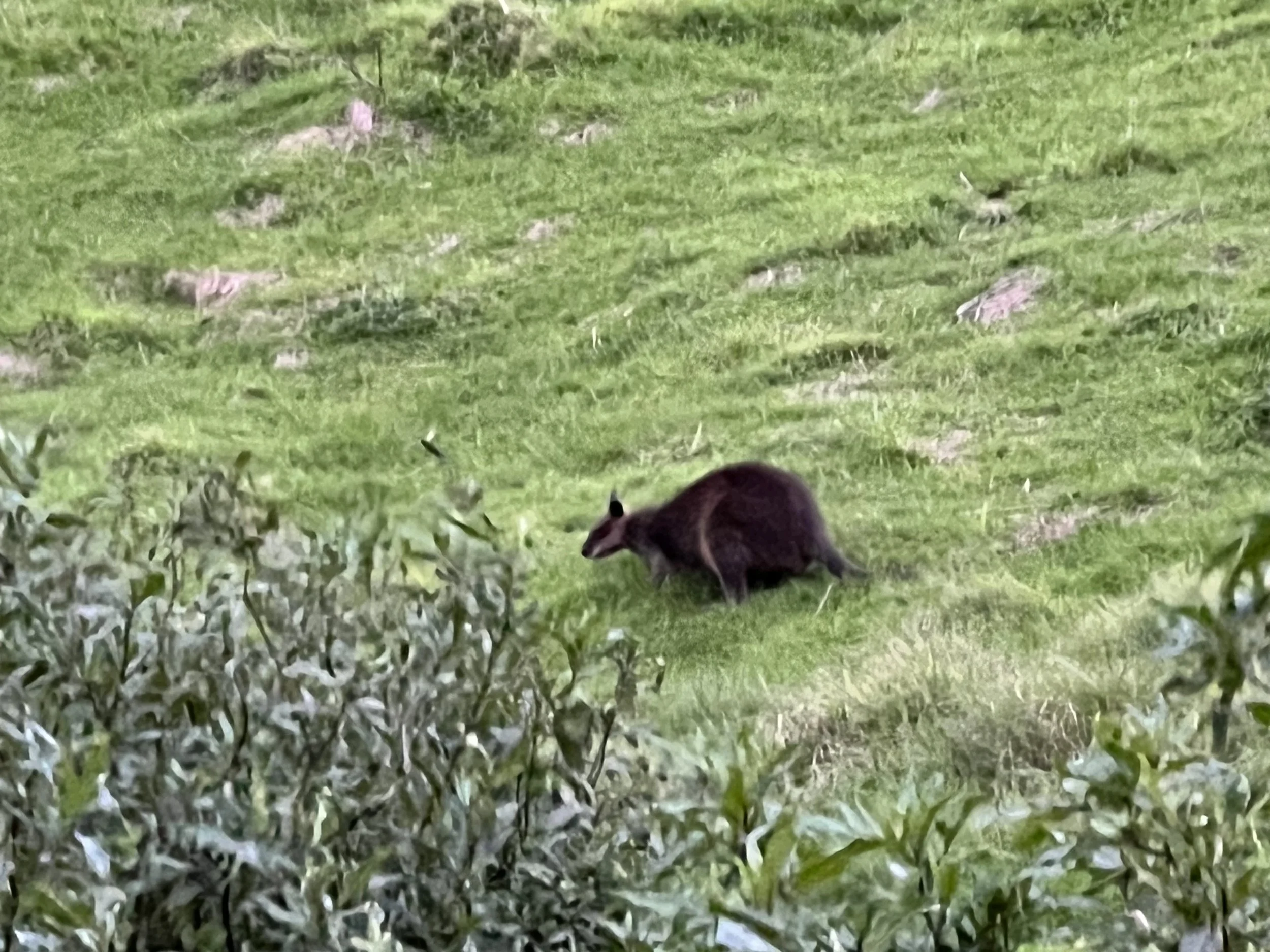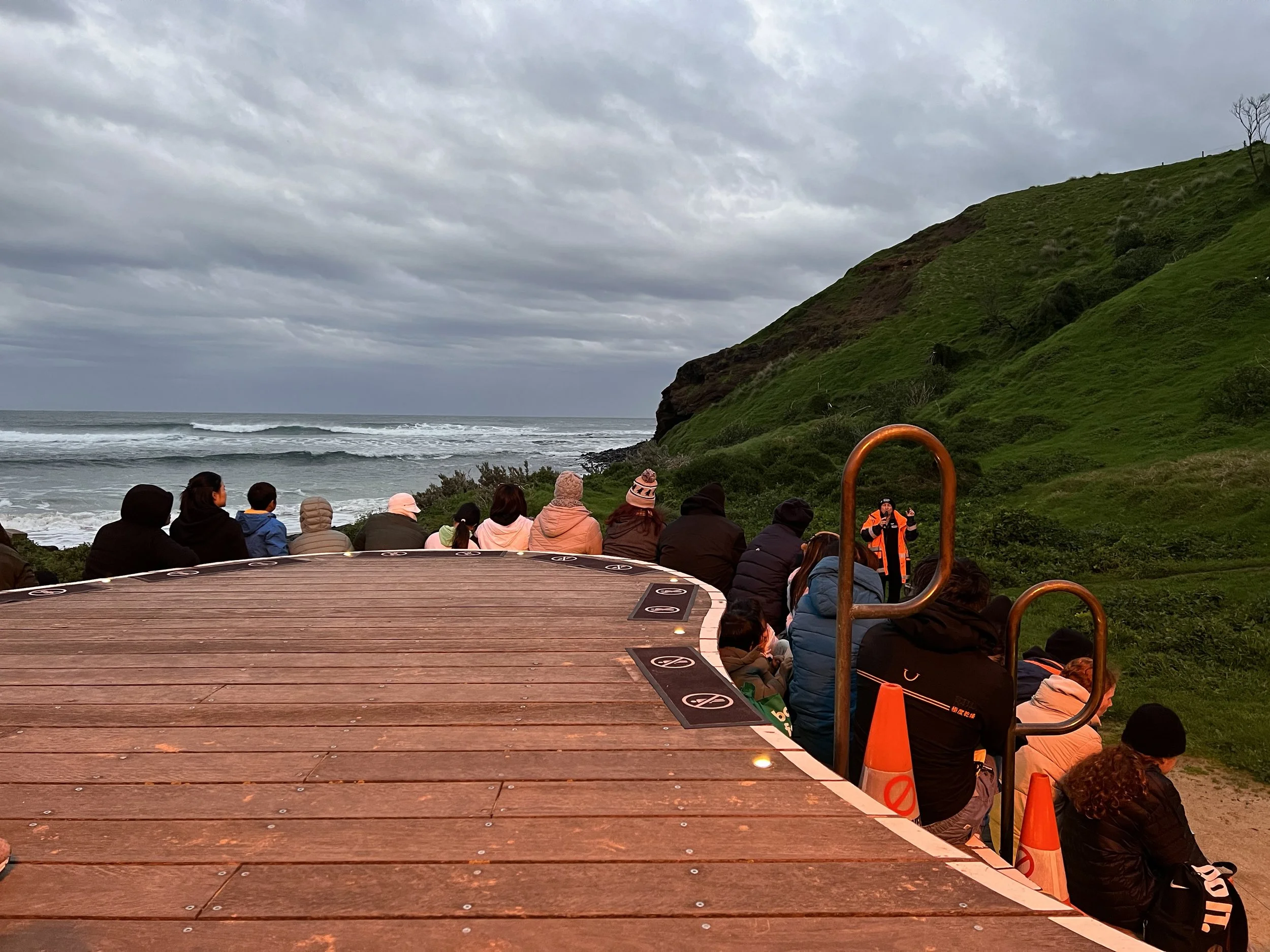Phillip Island - Victoria, Australia
Visiting Phillip Island was high on my list while in Melbourne. It’s roughly a two-hour drive from the CBD, and a local friend, who had lived on the island for a couple of years, kindly offered to drive and act as my tour guide for the day. With me covering meals and attraction tickets, it was a perfect collaboration.
My friend picked me up early from my hotel, and the drive was unremarkable until we approached the bay, where the scenery became far more captivating. Our first stop was a café in San Remo, just before the bridge onto Phillip Island. After a hearty breakfast to fuel the day, we headed to our first major stop—Cape Woolamai. From the parking lot, we walked along the beach before joining the trail that winds along rugged cliffs. This area boasts dramatic rock formations, sweeping ocean views, and a chance to spot wildlife. We were fortunate to see a wallaby along the loop, which spans roughly seven kilometres. The walk was invigorating, and the natural beauty of the coastline was breathtaking.
Next, we visited Churchill Island, a 19th-century working farm now serving as a heritage centre. The 3-in-1 combo ticket we purchased included access to Churchill Island Heritage Farm, Koala Conservation Reserve, and Nobbies Centre. The farm provided a delightful glimpse into 19th-century rural life, complete with animals such as horses, sheep, and cows, as well as informative historical displays. The visitor centre and café offered a comfortable pause before continuing our day.
We then made a short backtrack to San Remo Jetty for the daily pelican feeding at noon. It was fascinating to observe the pelicans gather in anticipation and then watch them feed under the guidance of the caretaker. Signs reminded visitors to stay behind marked areas for safety, as pelicans are wild birds, but the experience was incredibly engaging and intimate—something I hadn’t expected and was thrilled to witness up close.
After a short lunch, we explored the Forrest Caves, that are accessible at low tide. The sea caves, carved by natural erosion, offered fantastic photo opportunities and a chance to experience the rugged coastline firsthand. Caution was required, as waves and strong rips made some areas hazardous, but the dramatic scenery was well worth the careful exploration.
Next, we visited the Koala Conservation Reserve, where elevated boardwalks provide close-up views of these iconic marsupials. Informative signage detailed koala populations, sexes, and habits. It was fascinating to observe their nonchalant feeding on eucalyptus leaves, and I even picked up a small souvenir at the gift shop before continuing to our final stop.
The highlight of the day was Nobbies Centre and the fairy penguin parade. The world’s smallest penguin species return from the ocean to their burrows each evening. We arrived early to check the estimated arrival time and explored nearby trails overlooking the coastline. The area is home to penguin burrows and other wildlife, and the dramatic wind added a moody charm to the landscape. At Nobbies Centre, we enjoyed an early dinner before moving to the viewing platform. Staff briefed us on strict rules: camera flashes and regular lights could disturb the penguins, as they have sensitive eyes. Therefore, no pictures are allowed. The centre had also replaced all the lights in the area with low-intensity orange-filtered lighting for these penguins. Watching the penguins return from the sea in small waves was surreal—a humbling and magical experience that was worth every precaution.
By evening, we drove back to Melbourne, tired but fulfilled. It was a long day, but witnessing the wildlife, exploring the island’s natural beauty, and seeing the penguins up close made it completely worthwhile.
Background
Phillip Island is renowned for its stunning coastal landscapes and unique wildlife. The island’s conservation efforts, particularly the Phillip Island Nature Park, protect koalas, penguins, and native seabirds while providing educational and eco-tourism opportunities. Churchill Island, a heritage farm, preserves 19th-century agricultural practices, giving visitors insight into the region’s colonial farming history. Cape Woolamai and Forrest Caves highlight the island’s geological features, including dramatic cliffs and sea-eroded caves, while Nobbies Centre offers conservation education alongside spectacular coastal views. The daily pelican feeding at San Remo is a lesser-known attraction that showcases local wildlife up close, enhancing Phillip Island’s reputation as a premier destination for nature enthusiasts.
San Remo Pelican Feeding Info
Getting There
Phillip Island is approximately a two-hour drive from Melbourne’s CBD, connected via the M1 and Bass Highway. Driving is the most convenient way to explore, particularly if planning multiple stops across the island. Public transportation is limited, so for full access to sites like Cape Woolamai, Churchill Island, and Nobbies Centre, a car or guided tour is highly recommended. The island features well-marked roads and parking at major attractions, with easy walking access to beaches, boardwalks, and trails. Early departure from Melbourne ensures you can comfortably visit several locations, including the evening penguin parade, which is the island’s highlight. There are tours available but offer less flexibility with itinerary.
Route Overview
Itinerary: CBD Melbourne → Cape Woolamai (Pinnacles Lookout) → Churchill Island → San Remo Jetty → Forrest Caves → Koala Conservation Reserve → Nobbies Centre → CBD Melbourne
Distance: 324 km out & back (CBD Melbourne)
Duration: 15 hr (Driving time + Sightseeing + Hiking)
Cape Woolamai Hike
Distance: 7.34 km out & back (Woolamai Surf Beach Parking)
Total elevation gain: 155 m
Duration: 1 hr 36 min (with breaks 1 hr 38 min)
Difficulty: Easy
Cost Breakdown
Entrance Fee: Phillip Island Nature Park 3 Park Pass— AU$116 (2 Person)
Food: AU$146.35
Souvenir: AU$7.99
